By Joe Berk
The creek is dry and getting to the West End Gun Club is a lot easier these days, so I reloaded some 6.5 Creedmoor ammo in the brass good buddy Johnnie G sent to me. I wanted to try a couple of new loads in my maple-stocked X-Bolt.

I bought the X-bolt when I saw the wood, and it had a cross-country ride and a half to get to me. I saw it in a shop in Lamar, Colorado, and I knew I had to own the Browning as soon as I saw it. You don’t see many rifles with wood of this caliber.
There was a problem, though. The Colorado shop owner wouldn’t ship it to California. There’s an extra hoop or two a dealer has to jump through to ship a gun to California and I guess folks in Colorado aren’t basketball players. Here’s where capitalism came to the rescue. There’s a guy in Virginia who makes a living off of these kinds of situations, so I had the Colorado dealer ship it to the Virginia dealer, who then shipped it to my dealer in California. None of these dealers did so for free (going to Colorado-to-Virginia-to-California route wrapped the Browning in another $100 bill, and you can guess who had to pay up). But that’s okay. I wanted the rifle and now I have it. It really is an exquisite firearm. And it is exquisitely accurate. I’ll get to that in a minute.
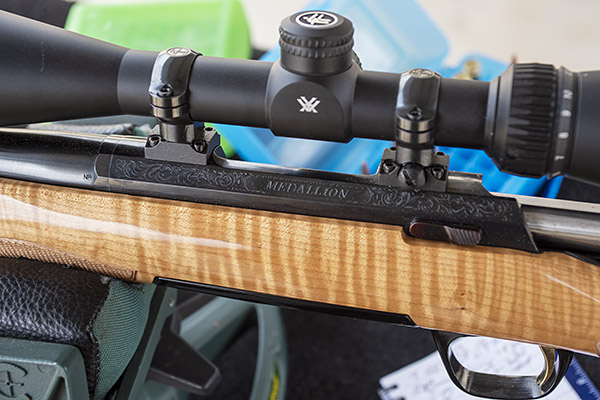
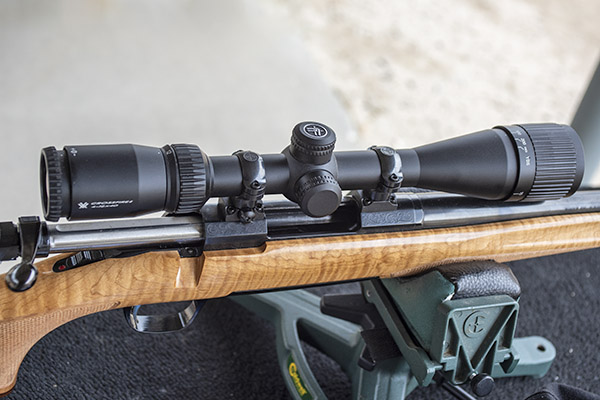
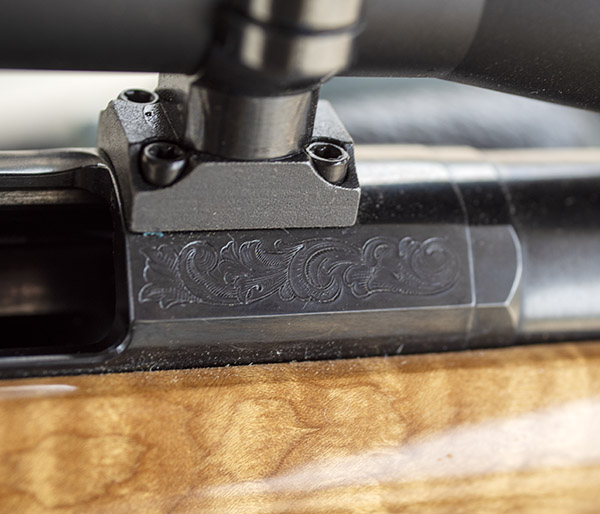

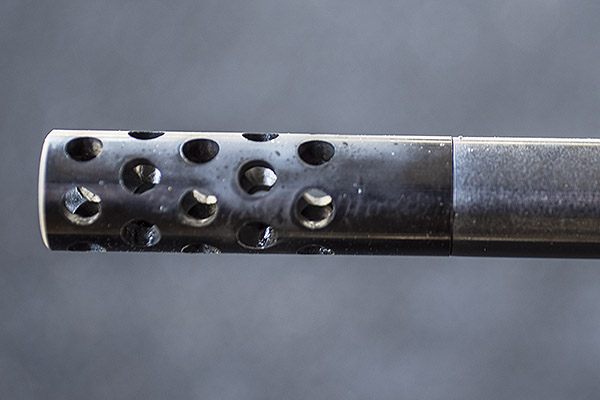
I used the Hornady 140-grain full metal jacket boat tail bullet for two loads I wanted to test; one with IMR 4350 propellant and the other with XBR 8208 propellant.
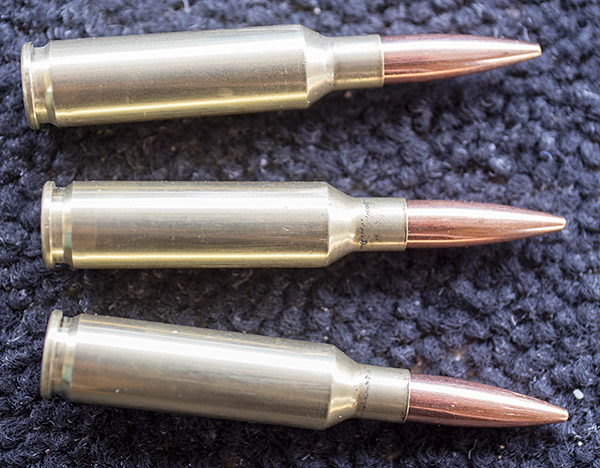
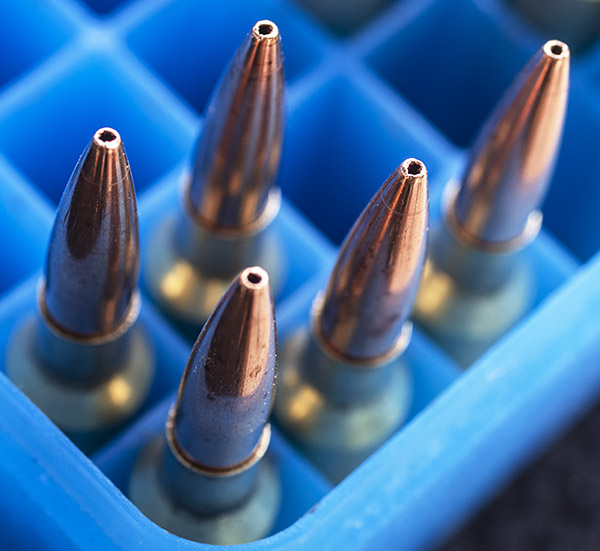
The loads showed no signs of excess pressure after firing. The bolt opened easily and the primers were not flattened.
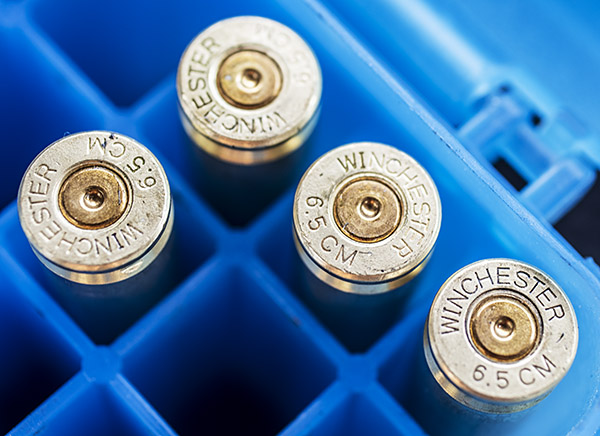
I full length resized the 6.5 Creedmoor brass because I have two rifles chambered in 6.5 Creedmoor (see our earlier story, A Tale of Two Creedmoors). The alternative approach is to neck size the brass only (which can theoretically offer improved accuracy), but when you neck size the brass the reloaded ammo will only fit into the rifle in which the brass was previously fired. I didn’t want to try to keep my ammo segregated by rifle, and as it turns out, I don’t need to. The full length resized 6.5 Creedmoor brass provided great 100-yard results in the Browning X-Bolt rifle with both the XBR 8208 and IMR 4350 loads.
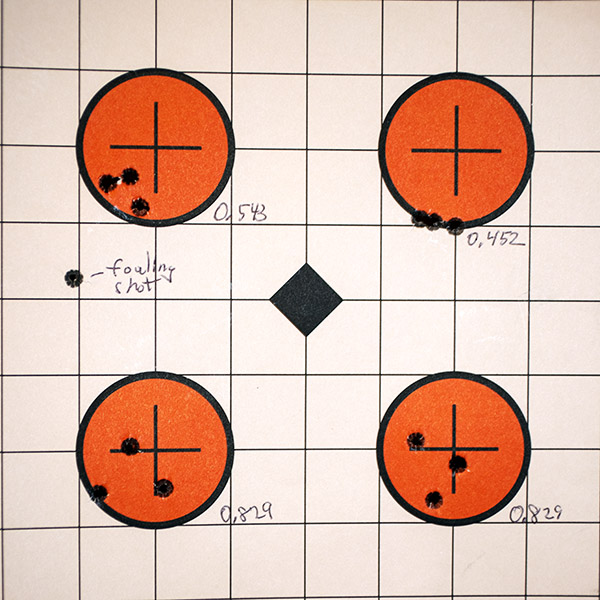
The first shot of the day at the upper left target was low and to the left, which is a common occurrence when shooting from a clean and lightly oiled barrel. The next three grouped tightly into the orange target (I could see the bullet holes with the rifle’s 12X scope). I let the barrel cool for a few minutes, and then I fired another three rounds at the upper right target. I was pleased; the load returned an even tighter three shot group in about the same spot as the first group. Both groups, when measured later, were a satisfyingly tight half minute of angle.
I let the barrel cool again, and then I moved on to the IMR 4350 loads. Wow, talk about consistent. Both shot to the same part of the target, and both were exactly the same group size: 0.829 inches.
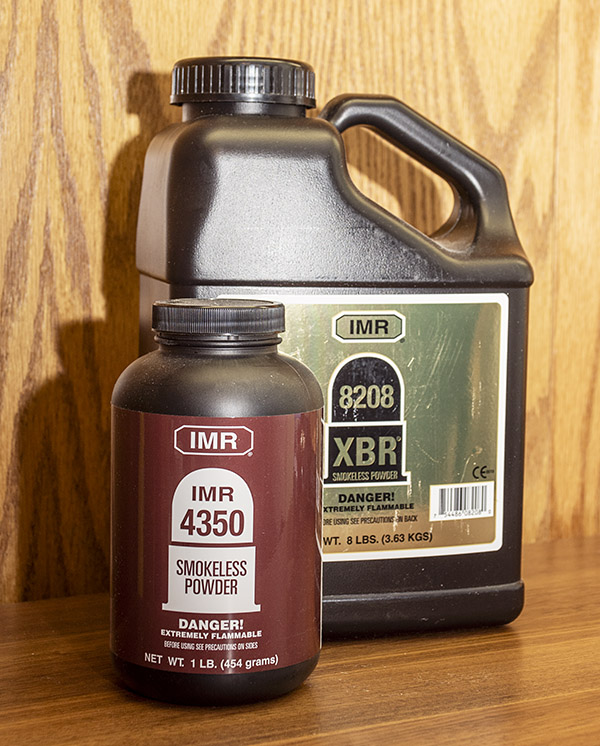
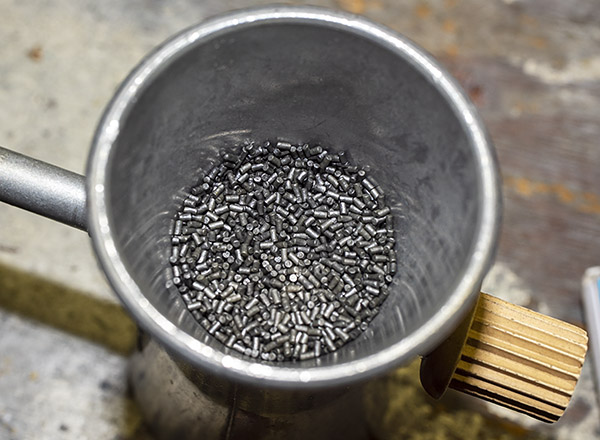
I had read that IMR 4350 was a “go to” powder for 6.5 Creedmoor accuracy, and my results confirmed that. I had not found much information about XBR 8208 accuracy in this chambering, but it sure seemed to get the job done for me. As the above target shows, the XBR 8208 performed even better than the IMR 4350 loads. Here’s a bit more on info on these two loads:
-
- Both had the Hornady 140-grain bullets seated to an overall cartridge length of 2.800 inches.
- I did not crimp the bullets in place.
- I did not trim the brass for either load.
- The powder charges for both loads were weighed for every cartridge. I used my powder dispenser to drop a little bit lower charge, and then trickled in the last few grains.
- I used 31.5 grains of XBR 8208.
- I used 39.0 grains of IMR 4350.
- I used Winchester brass with Winchester large rifle primers.
So there you have it: Two great 6.5 Creedmoor loads for the Browning maple Medallion.
Never miss an ExNotes blog:

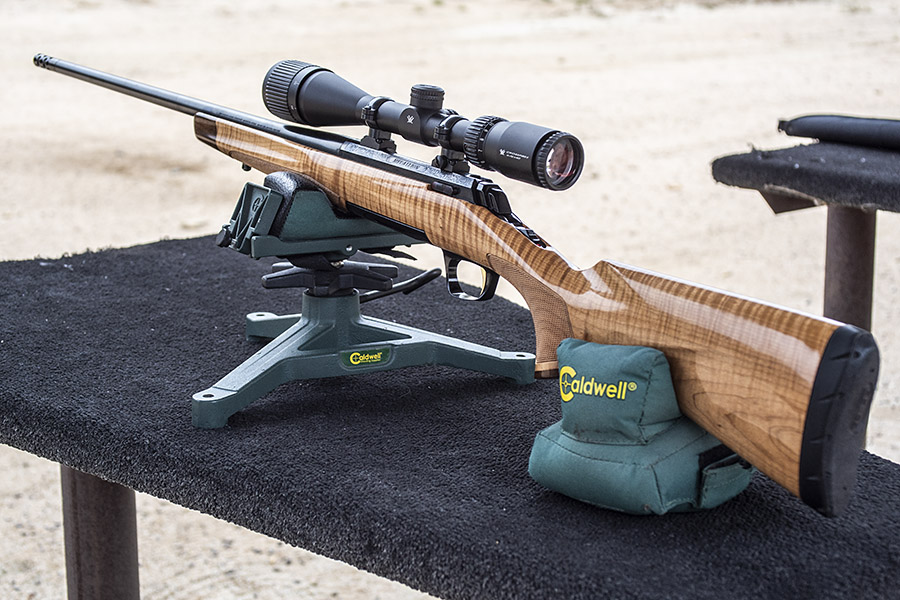


“You don’t see many rifles with wood of this caliber….” – ha – HA!!! I see what you did there!!! But seriously it is some spectacular wood. How do you manage to find these???
I can’t pass a gun shop without stopping. I’ve been doing that for 50+ years. Occasionally, you see things like this.
Thanks for commenting, Bob.
Wow, spectacular results (especially with the XBR powder) from a spectacular looking rifle. Really exceptional on both counts. Good for you!
Why do I smell bacon cooking when I read this article Joe?
You getting ready for another hog hunt.
Beautiful wood and nice shooting too.
Got a question for you .
I had an inexpensive bolt action 308 Savage that I would chamber and shoot a round in. Then couldn’t get the bolt open. Had to take a rubber mallet and tap it open. It did this for 4 rounds and I called it quits and sold the rifle. A friend that bought it said he didn’t care because he would only use name brand hunting ammo in it that worked fine. The ammo I had trouble with was new from LAX Ammo which has been good stuff so far. I could chamber a round and open the bolt and extract the unspent shell if I didn’t fire the rifle.
I’m not Savey enough to know what was going on but my machinist brain was telling me that maybe the chamber was on the tight end of specs and the ammo was on the large end of tolerances and when it was fired it, it didn’t have any wiggle room to slide out???
Any ideas?
I’m hanging onto the LAX ammo and looking for a different 308 bolt rifle that it will work in hopefully.
You asked two questions, Rob.
First, you smelled bacon because you know I would love to get out and chase pigs again. Or coyotes. Or jackrabbits. Or deer. Or…well, you get the idea. But there’s no bacon on wild hogs. Wild hogs have almost no fat, and bacon is belly fat, so ipso, facto, ergo (or something like that): No bacon on wild hogs. As an aside, the lack of fat makes almost all wild hog meat fairly flavorless. You have to season the heck out of it to get any taste. The sausage is pretty good. But I still want to go again.
Second, you asked about the bolt not opening easily on your Savage bolt action rifle. Savage makes a pretty good rifle. It could be the rifle (rough chamber, sticky bolt, etc.) but I doubt it. When the bolt sticks after firing a round, that is almost always a sign of excess pressure. If the bolt closed okay, it wasn’t a tight chamber or oversized case situation. If you still have the brass case from the fired round(s), examine the primers. If they are very flat, that’s a good indicator of excess pressure. I’d be very leery of that LAX ammo. But the problem is hard to diagnose without seeing the rifle and experiencing the problem myself.